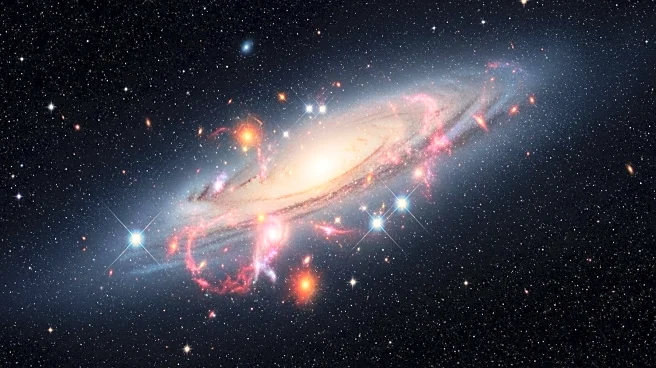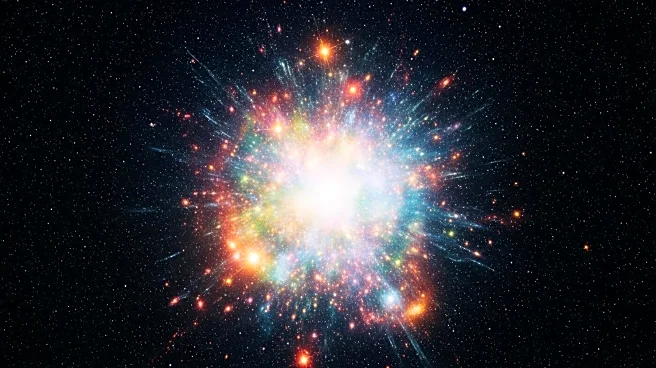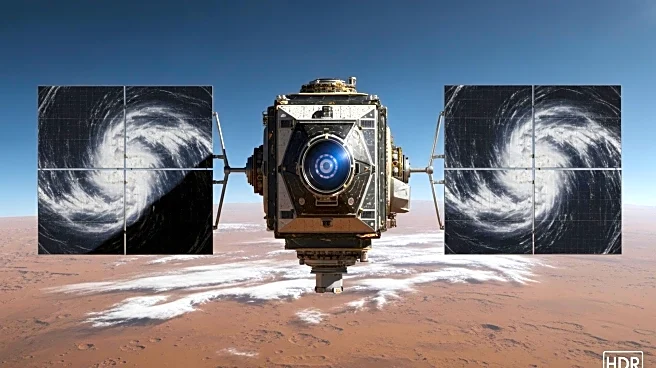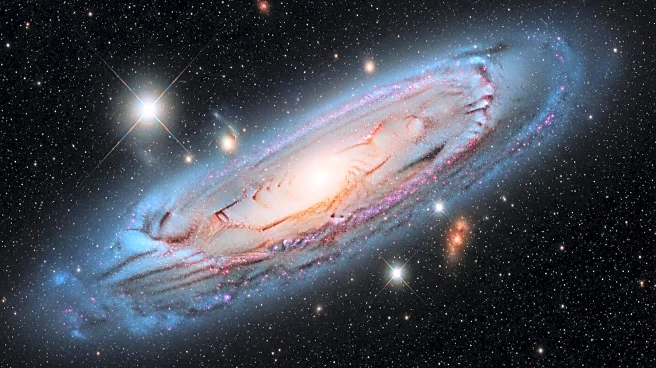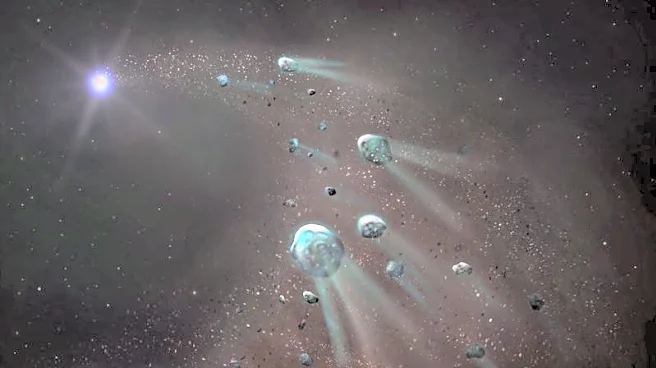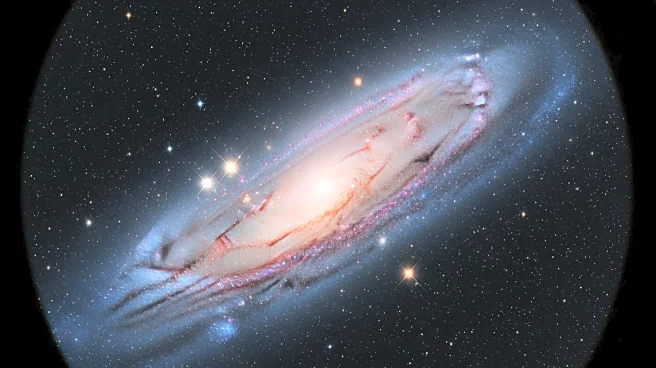What's Happening?
Astronomers from the University of Warwick have identified a frozen, water-rich planetary fragment being consumed by the white dwarf star WD 1647+375. Using ultraviolet spectroscopy from the Hubble Space Telescope, the team detected volatiles such as carbon, nitrogen, sulfur, and oxygen in the star's atmosphere, which is typically composed of hydrogen and helium. This discovery suggests the presence of volatile-rich, potentially life-enabling bodies in planetary systems beyond our solar system. The study highlights the unique role of ultraviolet spectroscopy in detecting these elements, providing evidence that icy, volatile-rich bodies exist outside our solar system.
Why It's Important?
The discovery of volatile-rich bodies beyond our solar system is significant as it suggests the potential for life-enabling conditions in other planetary systems. The presence of elements like nitrogen and oxygen, similar to those found in Kuiper Belt objects or Pluto-like bodies, indicates that these icy planetesimals could deliver water and other essential ingredients for life. This finding expands our understanding of planetary formation and the distribution of life-building materials in the universe, potentially guiding future research in astrobiology and the search for extraterrestrial life.
What's Next?
Future research will likely focus on using ultraviolet spectroscopy to further explore the composition of volatile-rich bodies in other planetary systems. This technique could become a crucial tool in identifying the building blocks of life around other stars. Additionally, astronomers may investigate whether the icy planetesimal originated within the planetary system of the white dwarf or was captured from interstellar space, providing insights into the dynamics of planetary systems.
Beyond the Headlines
The discovery raises questions about the formation and evolution of planetary systems beyond our solar system. Understanding the composition and behavior of these icy bodies could offer clues about the processes that lead to the development of habitable environments. The study also underscores the importance of advanced observational techniques in uncovering hidden aspects of the universe.


